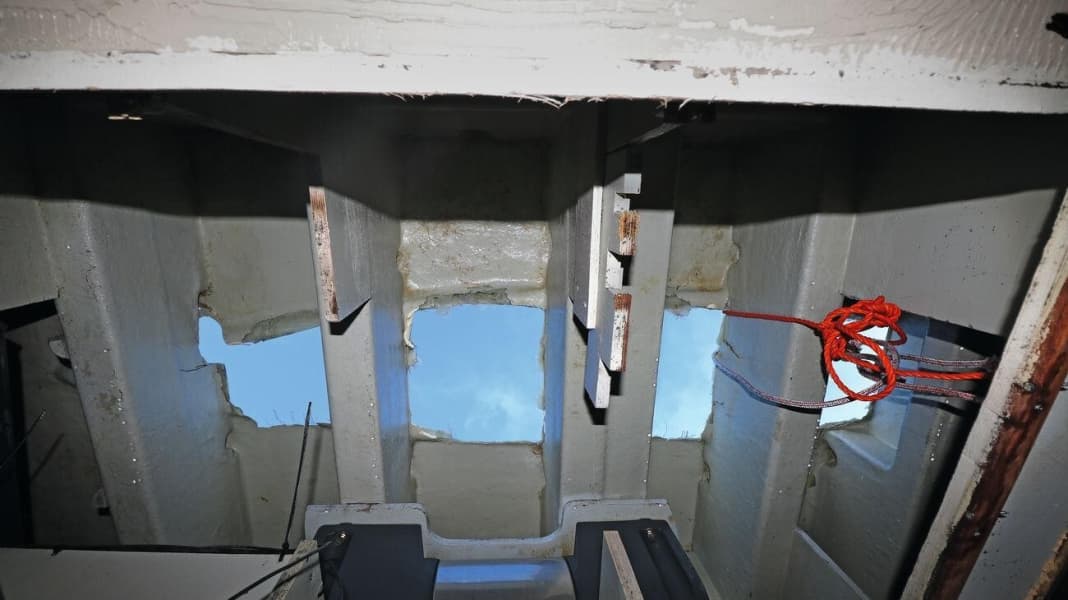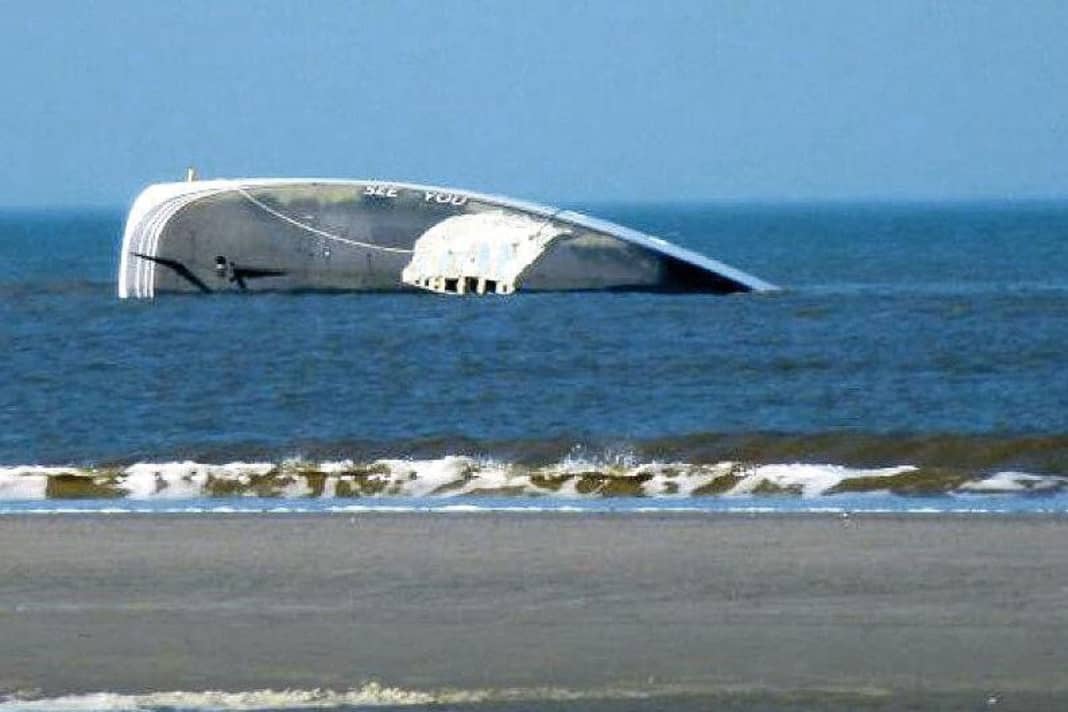
Keel losses are rare. But they do happen, both to regatta yachts and series-production yachts - and often with dramatic consequences. Just last weekend, two sailors died near Fremantle, Australia, after their yacht capsized in winds of around 25 knots. The accident was preceded by a keel loss. We have compiled another four cases in the following gallery.





Due to these repeated keel losses, the World Sailing Association has launched an initiative to help reduce the risk of such accidents, starting with regatta yachts. A group of experts has drawn up proposals that are to be implemented as mandatory requirements by 2020. Hasso Hoffmeister from DNV GL (formerly Germanischer Lloyd) was brought in as a consultant.
YACHT spoke to Hoffmeister about the causes of keel loss in both cruising and racing yachts, the specific goals of the World Sailing Federation and how its initiative could affect cruising sailing.
YACHT: Mr Hoffmeister, the keel of a yacht must not fall off. Yet it happens again and again. What are the causes?
Hasso Hoffmeister: On the one hand, the handling of the yacht plays a role, i.e. grounding, but also the design and manufacture, ageing and lack of maintenance.

Since 1996, all leisure yachts that come onto the market in the European Union have been subject to certification. They have to fulfil a wide range of ISO standards, which also applies to the keels. There should be no construction defects if a yacht has been certified, for example by you.
For yachts over twelve metres in length, this certification is carried out by a certification body such as DNV GL; below this size, self-certification takes place and there is no inspection by an independent body. Only the manufacturer confirms with his signature that the yacht complies with the ISO standard.
The inspection of the larger yachts is initially only carried out on the basis of construction plans.
The designer submits drawings to us in which the keel construction and its attachment to the hull are more or less well described. On the basis of these plans, especially the accompanying construction descriptions, we can see at first glance whether a designer has thought about whether he is concerned that his plan will actually be realised as intended or not. Then it might just say "shipyard standard".
We recalculate the details on the computer and if everything is correct, the drawing gets our stamp of approval. If this is not the case, it receives comments and then has to be changed accordingly. In addition, the prototype is subject to random construction supervision, but this is rather rudimentary compared to full certification. In the case of regatta yachts, even this is omitted, meaning that they are inspected solely on the basis of drawings.
Is this procedure sufficient?
No yacht certified by us has ever had a keel fall off - but that's no guarantee that it won't happen anyway. We only check the structural design.
We have no continuous control over the execution in the shipyard or at the keel manufacturer, as we are no longer involved in series production after the prototype.
These are the plans of the World Sailing Federation:
The World Sailing Association now wants to change the continuous control of the design, at least for racing yachts.
Racing yachts sailing in category 0, 1 or 2 regattas, i.e. generally offshore regattas, must comply with the Offshore Special Regulations of World Sailing. At the moment, only a drawing test is carried out for the keel. This inspection is to be extended in order to also examine the other critical aspects of a keel design and thus ensure that accidents due to keel loss no longer occur. This primarily concerns the execution of the work. When analysing past cases of damage, the World Sailing working group noticed that the reason for keel loss is not necessarily to be found in the design, but also in the implementation. The designers of the hull and keel were obviously not always aware of the importance of proper realisation of the design. It is planned that this rule will come into force for new builds from 2020.
So a kind of building inspectorate is to be introduced?
The new rule requires more precise documentation of the production process, such as which weld metal is to be used at which temperature, what needs to be taken into account with the material, what surface quality is to be achieved in the post-processing and so on. You could actually give the order to anyone and they would then realise it one-to-one. This type of documentation has only been available in rare cases to date. Normally, only a rough design was supplied - the shipyards then did what they thought was right. If you went to a manufacturer who built keels year in, year out, you probably had no problem; if, on the other hand, you went to a shipyard that was only cheap, you might have.
Now the entire production of a keel is to be monitored on site?
No, this is not possible for reasons of time and cost. Quality assurance should be documented by the producer himself, using photos, ultrasound or other methods. This all goes into a large documentation folder and is submitted to the inspection body, such as DNV GL. We still sit in the office and check everything. However, assembly is an exception. There will always be an expert on site to look at the critical marriage of keel and hull and check whether it has been carried out properly.
Repeated checks are also planned.
There are plans to introduce mandatory recurring inspections.
The idea at the moment is an annual inspection, but I think that's too rigid. If you only sail your boat around Funen once a year and don't run aground, I don't think an inspection is necessary. There will therefore probably be a criterion that takes into account the sailing time and the nautical miles travelled.
Why all this effort?
A run-up is a one-off, major event. It doesn't take much to fulfil the requirements of the standard; these are relatively simple calculations, lever laws and strength calculations. Where it gets complicated is in the area of millions of load cycles. There is a load change in every shaft, these accumulate in different amplitudes and can lead to fatigue in structures. This results in damage that can occur at times when nobody expects it, perhaps in relatively calm conditions. Recurring inspections are intended to reduce this risk.
Developments in the regatta sector often pave the way for popular sport. Are stricter controls also planned for leisure yachts?
I cannot say to what extent this initiative will be accepted by those responsible for the safety of recreational boating.
Would that make sense from your point of view? A kind of boat MOT for the keel?
I think that would increase safety. The problem is essential. Other areas are secondary, not immediately life-threatening. A rig can come down without endangering the crew, even a loss of rudder is drastic, but the yacht usually still floats. The consequences of a keel loss, on the other hand, are dramatic, within seconds the yacht lies flat on the water and only with luck does not sink. Compared to the number of yachts underway, keel loss is a negligible occurrence. But when something does happen, it often involves loss of life. To prevent this, a number of things have to be done legitimately.

